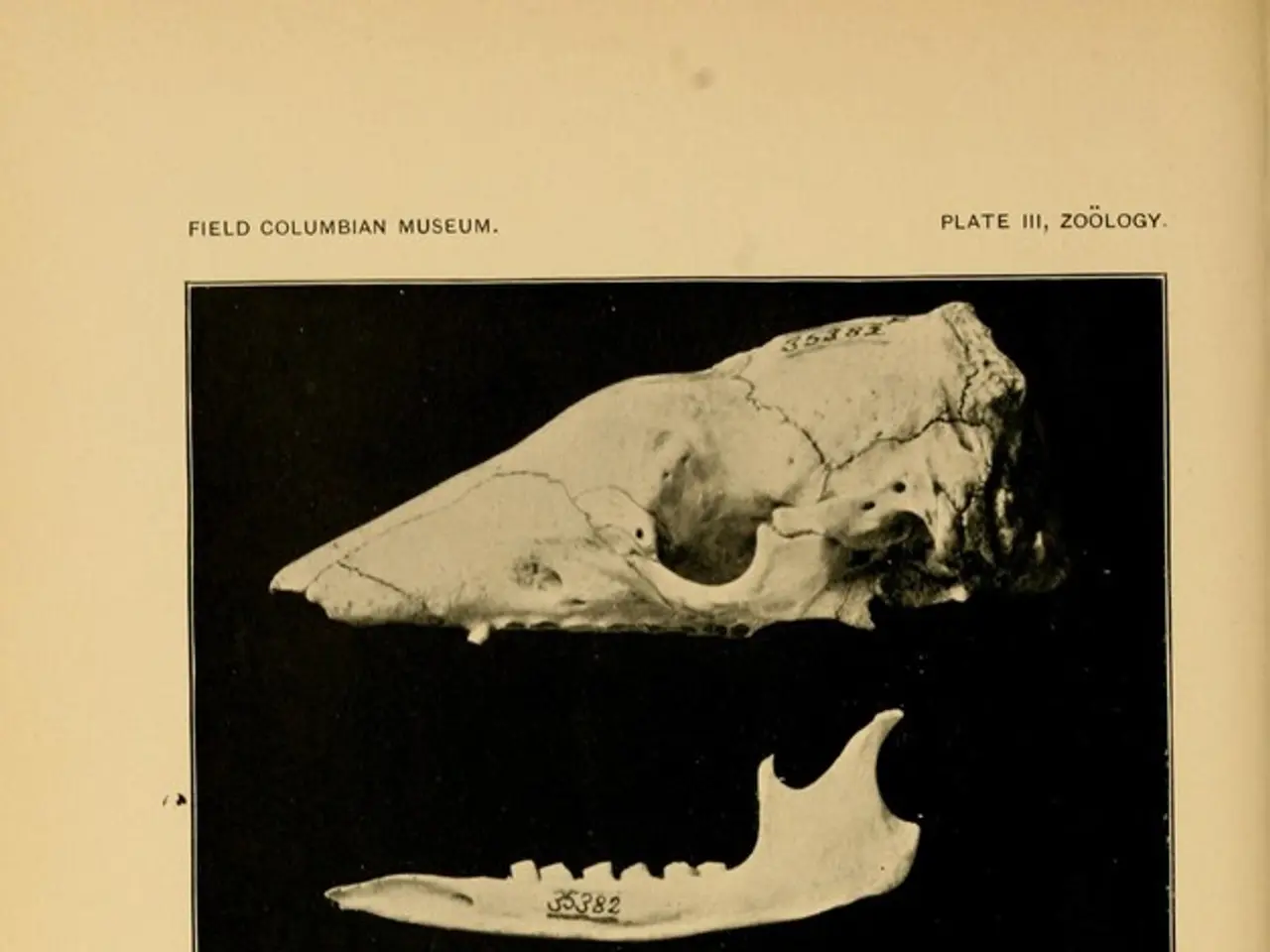Signs of Osteoporosis: Indicators in Initial and Advanced Stages
Osteoporosis, a condition that weakens bones and makes them more prone to fractures, often goes unnoticed until it's too late. This silent disease can have serious implications, making it essential to be aware of its symptoms and risk factors.
Recognizing the Symptoms
Osteoporosis typically shows no early symptoms, with bone density loss happening gradually and silently. However, once a bone fracture occurs, common symptoms include back pain, loss of height, stooped posture, and unexpected or low-impact bone fractures. Some individuals may also experience bone tenderness or muscle soreness around fractured areas. Fractures in the spine can lead to changes in posture and height [1][2][3].
Conditions with Similar Symptoms
Osteoporosis shares symptoms with a variety of other bone and spinal disorders, including osteopenia, a milder form of bone thinning, and other bone disorders like osteomalacia or Paget’s disease. Musculoskeletal conditions such as arthritis or chronic back pain unrelated to fractures, spinal conditions such as degenerative disc disease or compression from tumors, nutritional deficiencies, rheumatoid arthritis, and thyroid disorders can also mimic osteoporosis symptoms [5].
Prevention and Diagnosis
Given the overlapping symptoms, medical evaluation, including bone density testing (DEXA scan), is crucial for an accurate diagnosis [3][5]. Many medical conditions, medications, and risk factors can elevate the chances of developing osteoporosis, including vitamin D deficiency, calcium deficiency, and malnutrition.
It is important to take preventative measures and get screened if at risk. For premenopausal females and people under the age of 50, a Z-score is used instead, with a Z-score of -2.0 or less indicating low bone density. The U.S. Preventive Services Task Force recommends bone health screening for all women over 65 and postmenopausal women under 65 with risk factors [6].
The frequency of bone mineral density testing will depend on a person's age, their risk factors, and the results of previous tests. Doctors diagnose osteoporosis with a bone mineral density test, specifically central dual-energy X-ray absorptiometry (DXA) [7].
The Importance of Prevention
Osteoporosis occurs when bone breaks down faster than it can rebuild, resulting in fragile bones. As a person ages, the body does not replace bone at the same rate, gradually reducing bone density. It is crucial to take steps to help prevent osteoporosis from an early age.
A bone mineral density test can detect osteoporosis by measuring calcium and other minerals in the bones. Osteopenia is a decrease in bone density that is not as severe as osteoporosis. A person with this score has weakened bones that may be at risk of fractures [7].
In summary, osteoporosis initially causes no symptoms and is often first detected after fractures or changes in posture and height occur. Given the similar symptoms of other bone and spinal disorders, professional assessment is essential for an accurate diagnosis and timely treatment.
- Osteoporosis is a silent disease that weakens bones, making them more susceptible to fractures.
- Bone density loss occurs gradually and without early symptoms in osteoporosis.
- Back pain, loss of height, stooped posture, and unexpected or low-impact bone fractures may indicate osteoporosis.
- Some individuals experiencing bone fractures may have bone tenderness or muscle soreness around the fractured areas.
- Spinal fractures can lead to changes in posture and height.
- Osteoporosis shares symptoms with various bone and spinal disorders, such as osteopenia and Paget’s disease.
- Arthritis, chronic back pain, nutritional deficiencies, rheumatoid arthritis, and thyroid disorders can mimic osteoporosis symptoms.
- Medical evaluation, including bone density testing (DEXA scan), is vital for an accurate diagnosis.
- A Z-score is used for premenopausal females and those under 50 to determine low bone density.
- The U.S. Preventive Services Task Force recommends bone health screening for women over 65 and postmenopausal women under 65 with risk factors.
- The frequency of bone mineral density testing depends on a person's age, risk factors, and the results of previous tests.
- Doctors diagnose osteoporosis using a central dual-energy X-ray absorptiometry (DXA) test.
- Osteoporosis occurs when bone breaks down faster than it can rebuild, leading to fragile bones.
- Prevention methods are essential to address osteoporosis at an early age.
- A bone mineral density test measures calcium and other minerals in the bones to detect osteoporosis.
- Osteopenia is a decrease in bone density, putting the individual at risk of fractures.
- Osteoporosis and chronic kidney disease share some risk factors, such as age, gender, and certain medications.
- Lifestyle choices, like excessive drinking and smoking, increase the risk of developing osteoporosis.
- Calcium, vitamin D, and regular exercise are essential components of bone health and osteoporosis prevention.
- Health and wellness providers emphasize the importance of a balanced diet and adequate nutrition for bone health.
- Females going through menopause or those with a family history of osteoporosis should be aware of the increased risk.
- Osteoporosis is a chronic disease that can lead to long-term health complications if left untreated.
- Some medications, such as steroids, hormone replacement therapy, and certain cancer treatments, can increase the risk of osteoporosis.
- Respiratory conditions may affect bone health indirectly by reducing physical activity levels, leading to calcium loss.
- Digestive health can impact bone health, as nutritional deficiencies from poor absorption may lead to weaker bones.
- Adequate eye, hearing, and mental health care is vital for overall wellness, including maintaining bone health.
- Skin conditions can indirectly impact bone health due to reduced sunlight exposure, decreased vitamin D production, and poor nutrition.
- Energy inefficiency in manufacturing and industry contributes to climate change, affecting environmental-science research and policy efforts.
- Financing and investment in renewable energy solutions are essential for sustainable living and reducing the environmental impact of manufacturing and industry.
- Recent advancements in artificial intelligence, data and cloud computing, and cybersecurity show promise for addressing climate change and promoting sustainability in various sectors, including transportation, retail, and home-and-garden industries.








